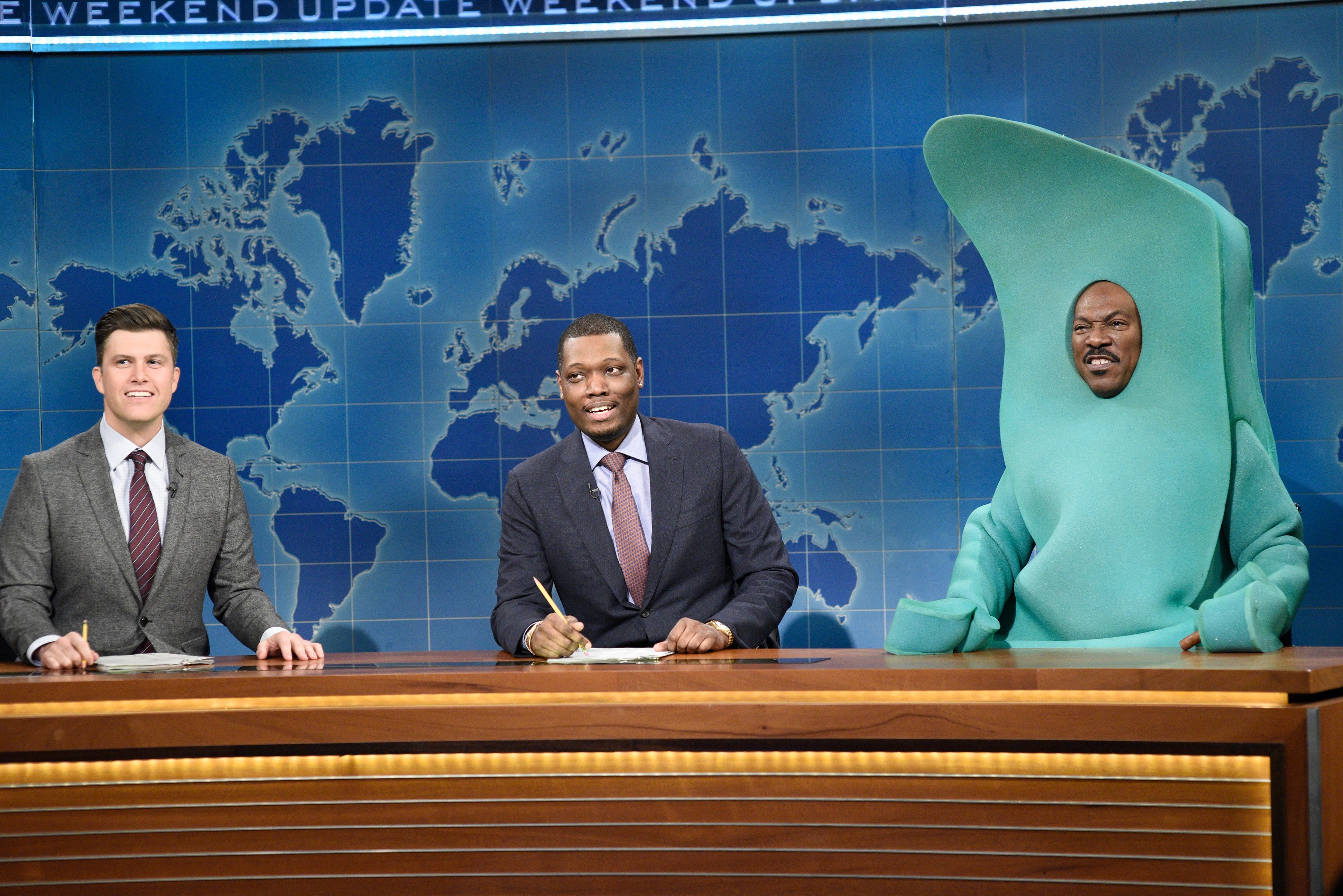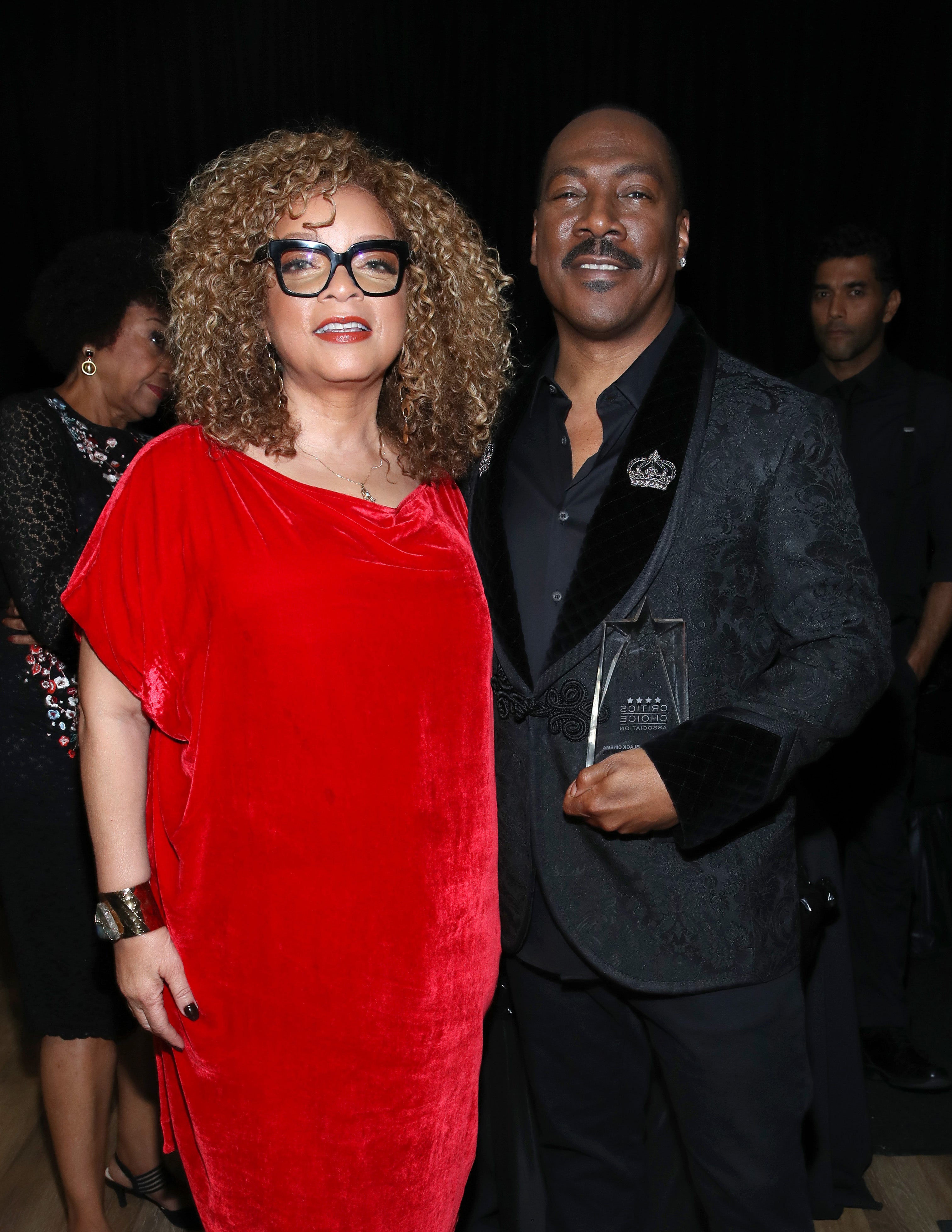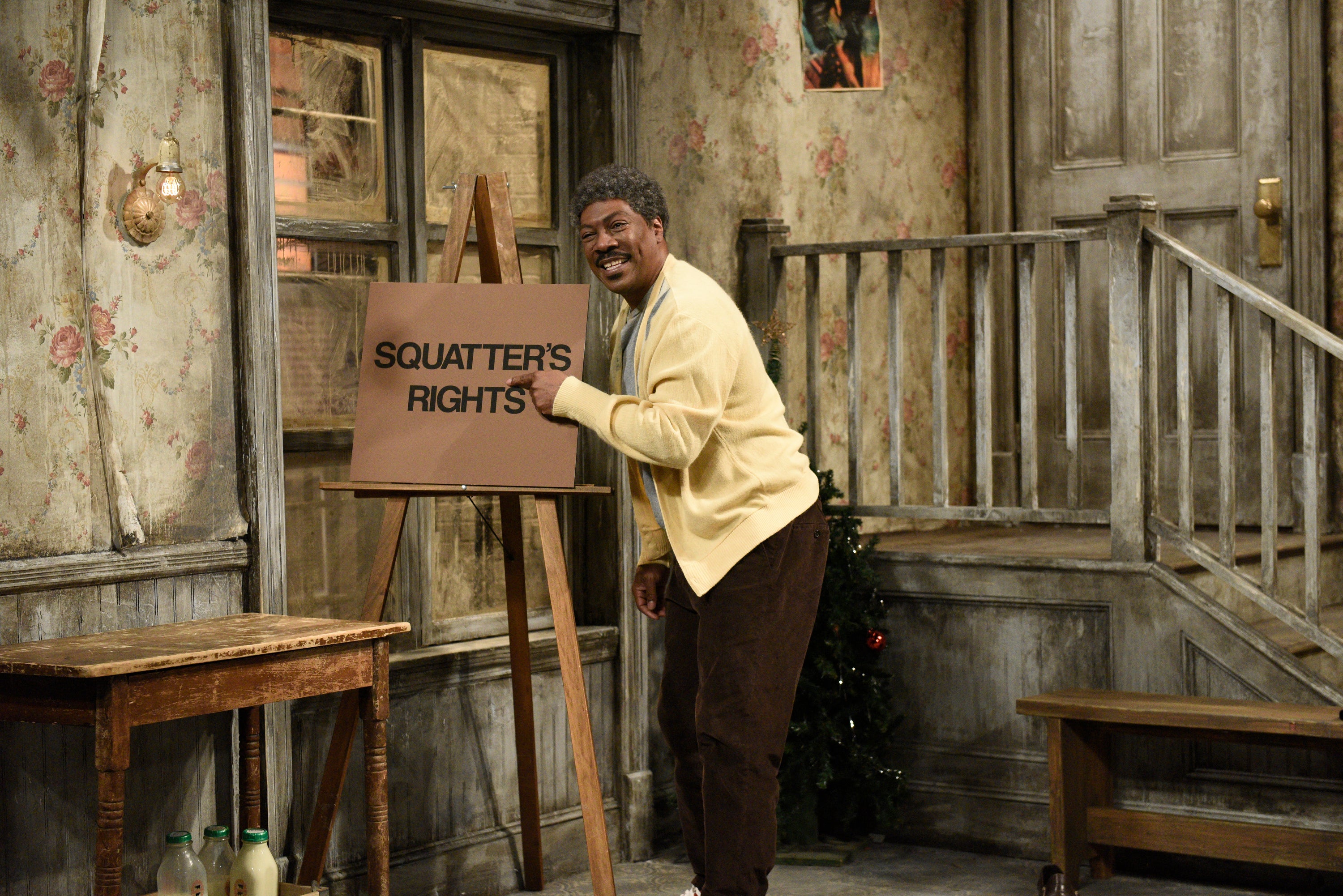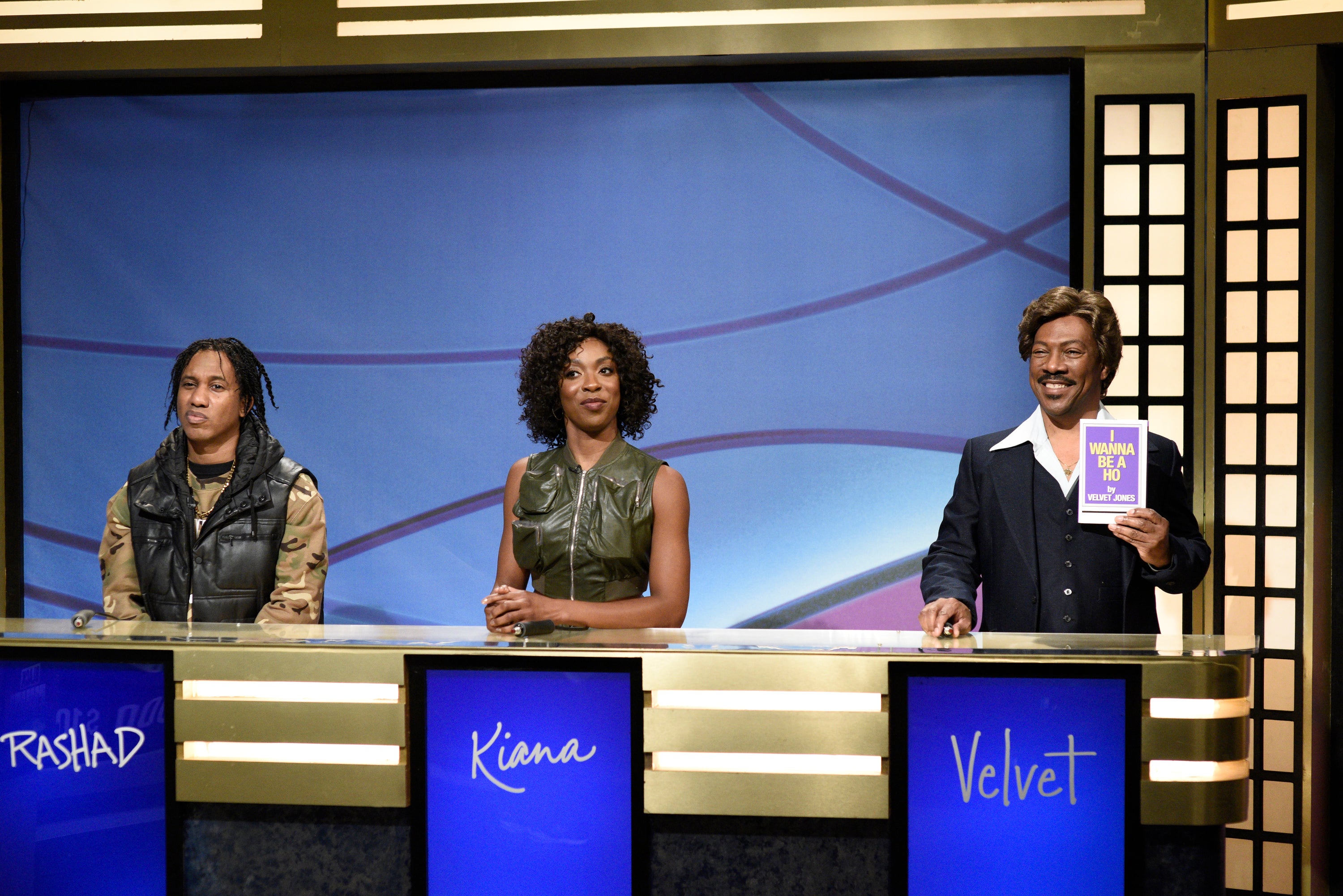When the cigar-chomping Gumby stormed the set of Saturday Night Live’s Weekend Update skit, that’s the point when my laughter almost woke up the kids. Eddie Murphy returned to host SNL last weekend for the first time in 35 years, with America—especially everybody who was young in the 1980s—glued to their screen of choice. As grizzled and industry jaded as ever, former clay animation star Gumby (one of the most popular characters from Murphy’s 1980-84 SNL stint) interrupted the broadcast with a harangue of insults straight from Murphy’s id. “I saved this damn show from the gutter!” shouted Murphy-as-Gumby. “It’s thanks to me, and this is the thanks that I get? Shame on you, NBC!”

Gumby dates back to Howdy Doody and the bland days of 1950s children’s television. Resurrected by Murphy midway through his Saturday Night Live run in 1982, the green, slant-headed, bendable figurine transformed into a cigar-loving, profane Borscht Belt-era performer whose narcissism Murphy summarized in a recurring, much-loved catchphrase: “I’m Gumby, dammit!” (If you haven’t heard of the Borscht Belt, consider it a Jewish version of the chitlin’ circuit.) Last night, the show had already been sailing along on Murphy’s comic genius for 54 minutes before Gumby showed up, but his return took things over the top. He even cracked himself up mid-sketch before ending on his lust over musical guest Lizzo: “Huzza hubba bubba… And you know, colored girls don’t usually do it for me.”
Dolemite Is My Name, Murphy’s award-winning turn as ’70s comedian Rudy Ray Moore, primed the pump for his comeback. Coming 2 America, the sequel to his classic 1988 romantic comedy, just wrapped last month down at Tyler Perry Studios. A return to his old Beverly Hills Cop franchise is reportedly up next. Murphy hasn’t performed stand-up comedy in front of live audiences in 30 years, but he’s been talking about concrete plans to return onstage in the immediate future. Murphy recently told WSJ. Magazine that this late-career revival is “more like a bookend” to the meteoric career phase which launched on Saturday Night Live.

Everyone who loved and lived through the Eddie Murphy of 48 Hours, Trading Places, Delirious, Beverly Hills Cop, Coming to America, Raw, Harlem Nights, Boomerang and The Nutty Professor tuned in to SNL on Saturday night, hoping he could still crack us up. Black Twitter and nationwide watch parties all caught his monologue in real time, when Dave Chappelle, Tracy Morgan and Chris Rock (and, yes, series regular Kenan Thompson) supported Murphy with their presence and a handful of gracefully landed jokes. Suited up in his signature black, the show’s former enfant terrible looked at ease—a 58-year-old elder statesman with sharper humor than most of the modern-day Saturday Night Live cast.
Mister Robinson’s Neighborhood, a send-up of children’s TV host Fred Rogers as a poor Black man in the hood, kicked off the night with Murphy in a grey afro wig reviving the Mr. Robinson character. The hook that held everything together was gentrification: after all this time, Robinson’s old building is now full of million-dollar condominium apartments, and white neighbors. Robinson himself is now a squatter, a new vocabulary word he teaches the boys and girls out there in TV land. Murphy waved a beckoning hand and stared at the camera with surprised wide eyes and his mouth in an O, like Mr. Robinson always did. And we laughed our asses off, like we always did.

Next up: Buckwheat. For all of us who first caught Murphy’s rising star in middle school or as teenagers, the night delivered as much nostalgia as this weekend’s Star Wars movie. What we maybe never considered is that Murphy served up nostalgia from the very beginning. As kids, we were weaned on Mr. Rogers and his magical world of make-believe. Some of us saw The Gumby Show episodes in syndication. And black-and-white reruns of The Little Rascals introduced us to a gang of mischievous kids from the 1920s, including the token Black boy, Buckwheat. Most of Murphy’s skits came from satirizing stuff from his wonder years—Mr. Rogers, Gumby, Buckwheat—and his own comedy gold, in turn, became a part of ours.
That said, Buckwheat popped up disguised as an ear of corn in a parody of The Masked Singer, but he was hardly corny. SNL hits a snag when it overly relies on a one-note gag for entire skits, and the one funny thing about Buckwheat is that Murphy plays him with a speech impediment. Judges on The Masked Singer, therefore, immediately recognize his voice underneath the costume. He performs “Dine, Teal, Dawibba,” “I Chot da Chariff,” “Tinga Nadies” and more, mangled hits from Stevie Wonder, Bob Marley and Beyoncé. Way back when, Murphy transcended the one-note gag when he staged the assassination of Buckwheat for a whole other comedic angle, spoofing the murder of President John F. Kennedy. But last night, just seeing Murphy run the gag for the first time in 35 years was enough to have us rolling.
Murphy could have given us his James Brown in a hot tub routine. But seeing as though the Godfather of Soul is no longer with us, that might’ve been weird—and maybe a shirtless 58-year-old isn’t the best idea either. His old SNL foil Joe Piscopo could have shown up, but truth be told, he wasn’t missed. What we got by the end was Velvet Jones, the last of his iconic characters to be brought back to life, as a contestant on “Black Jeopardy.” Jones had always been known for get-rich-quick schemes, a shyster with a sketchy background and a knack for nonsense words. Last night, he got nothing right on the game show, but plugged self-written books like How to Dance Like a Ho, Ass for Cash and How to Be an Instagram Ho instead. Still, Murphy had already won Saturday night after Gumby. The rest was just extra credit on top of a well-earned A.

When I was 12, I shot some hoops late at night with my best friend in eighth grade. I remember a high school hard-rock walking onto the court with his girlfriend, and we ended up in a wildly uneven basketball game. We were no competition for him; he spent the whole time running lines to his girlfriend from Murphy’s recent HBO stand-up special, Delirious. Finally I sunk the ball through the hoop. I turned to him with the line I had prepared the whole night and said, “Goony goo goo, motherfucker.” I made him laugh; the nerdy geek knew Murphy too. Moral of the story: Murphy was the calling card of cool once upon a time.







I met Eddie Murphy at a party last month, high in the Hollywood Hills on a Thursday night. Netflix screened Dolemite Is My Name for the African-American Film Critics Association at somebody’s beautiful home, and eventually director Craig Brewer walked in with the star of the show. When I turned to Murphy for a picture, all my conversation ideas felt random. He’d worn a lot of designer Armand Basi in the ’90s, I wanted to thank him for turning me onto the guy. I wanted to propose a story about his old musical collaborations with Rick James and Michael Jackson, both gone too soon. But the phone camera flashed and we separated. It was better for EDDIE MURPHY to remain the superstar who got me cool points on a Bronx basketball court once instead of some dude I could chat up at a house party.
On Saturday Night Live, Eddie Murphy delivered. Like all the rest of us fans, I’m here for the renaissance.
Miles Marshall Lewis (@MMLunlimited) has written for GQ, Teen Vogue and many other outlets. His book on Kendrick Lamar is due in 2020 from St. Martin’s Press.



